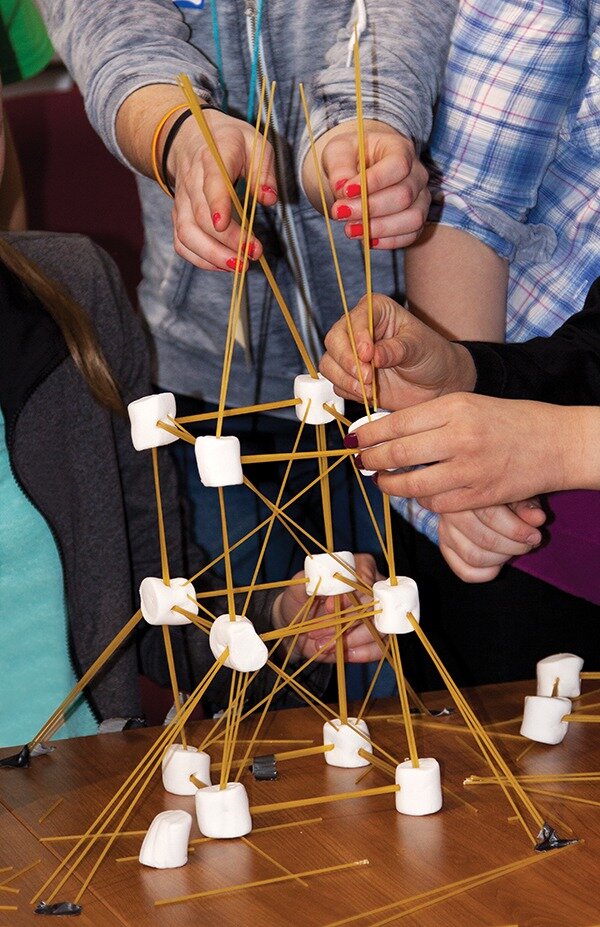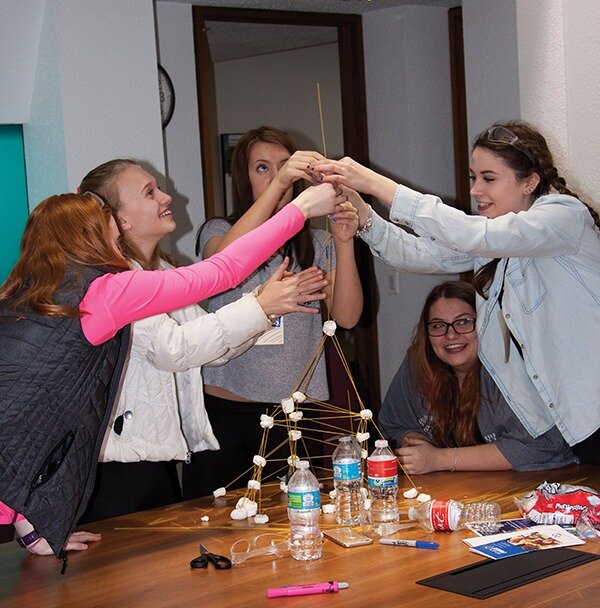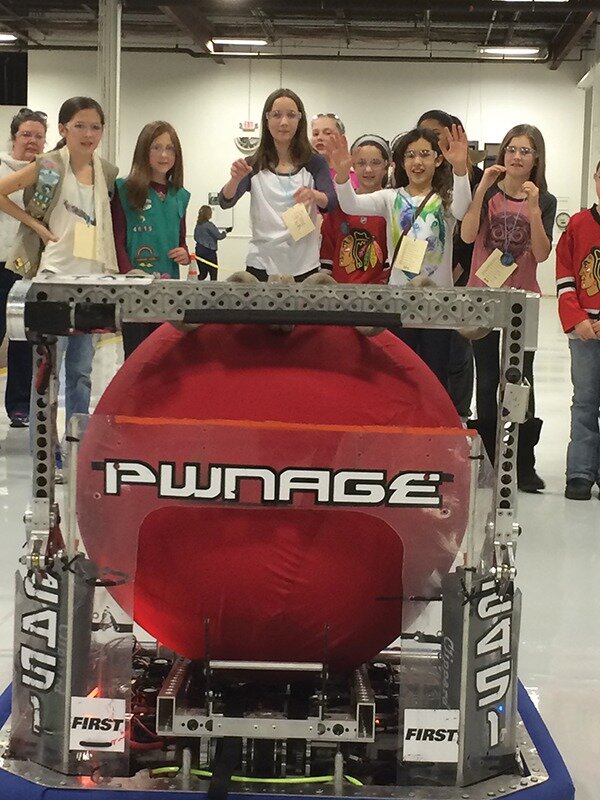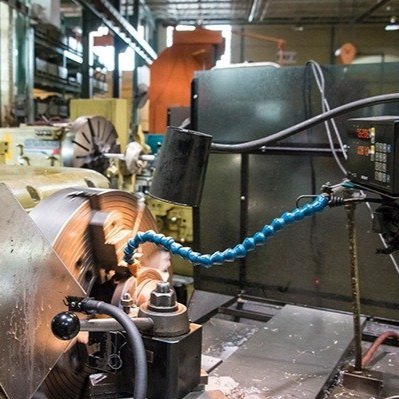Women Excel in Engineering - Introduce a Girl to Engineering Program
/Jayne Beck uses her own life experience to encourage girls to pursue careers in STEM and works closely with the Introduce a Girl to Engineering Program.
By Michelle Segrest, Navigate Content, Inc. Reporting for Maintenance Technology Magazine




At the 12th annual Siemens “Introduce a Girl to Engineering” event in West Chicago in March 2016, Jayne Beck showed a group of 100 girls what stuffed animals, cheesecake, music, perfume, airplanes, medical equipment, motors, and cell phones all had in common. It’s easy, she explained. The designs all depend on the creativity and skills of engineers.
Once considered a male profession, Beck and other women like her are breaking the stereotype. Beck, the Motor Control Center Order Engineering Manager at the Siemens facility in West Chicago, part of Siemens Corp., Washington, has been an engineer for 35 years. Her story, though, goes back even further.
“My dad was a plant manager of a very small company. He would take me with him to work on Saturdays and let me run manual brake presses and let me make things with scraps of sheet metal,” Beck said. “I had girl toys, but also lots of boy toys. My parents didn’t believe in stereotypes. I liked playing with Legos, building blocks, Lincoln Logs—toys more associated with boys, especially in the 1960s.”
Her first aspiration was to become an architect. “I did well in science and math. A high school counselor told me engineering was the same as architecture,” she said. “This is not really true, but I believed it and began to pursue engineering.”
Breaking the Barriers for Women Engineers
Women are still outnumbered 10 to 1 in the engineering field. “I think this stereotype has its roots when kids are very little,” she said. “There are stereotypes about the types of jobs men should have and the ones women should have. Most teachers and nurses are female and most engineers are male.
Beck scored a summer internship doing drafting work for a company that hired her after she graduated from the Univ. of Illinois, Urbana-Champaign. “I worked there for seven years and did a lot of mechanical design and also designed automated machinery,” she said. “Then I happened to find a job with another company in my area, Furnas Electric Company.” Siemens acquired Furnas in 1996.
Being the only woman in a man’s field has always been the norm for Beck. She hasn’t let it stop her. A swimmer in high school, she draws on her competitive nature.
“I’ve always been a minority,” she said. “As a manager, I was the only female on the staff for many years. In the earlier years, there were challenges related to being female. People just were not used to having women around. But it has gotten better and is not an issue anymore. There were just always doubts about whether you can do the job because you are a female. I always felt like I had to work harder than the guys. I didn’t want to fail so I was willing to put in long hours and extra effort to make sure I was successful.”
The Next Generation of Female Engineers
During a 100th anniversary celebration for the Girl Scouts, a Siemens group was trying to encourage STEM (Science, Technology, Engineering, and Math) careers. There, Beck overheard a young girl telling her mother, “I’m going to be an engineer just like Daddy.” Her mom said, ‘Why would you do that?’” Beck admitted this was a bit discouraging.
Gender equality is important to Beck. So, it came as a shock when her daughter Katelyn made a startling comment at the tender age of 5. “We were talking about homework, and she said, ‘You know, Mom, girls can’t do math.’ I thought, how could my daughter truly believe that at such a young age? Someone had imbedded that in her mind, and she believed it.”
Studies show that girls do just as well in math and science as boys up to a certain age, but at some point they change their path, Beck said. “Sometimes the girls that do choose engineering do really well in high school, then find college more challenging. But college can be a quantum leap for everyone. People in general, and especially girls, don’t seem to understand what engineers do. This plays into it not being a popular choice for girls. It’s hard to break the pattern. Everyone goes to the doctor, so kids know what doctors do. People know what lawyers do. But not everyone understands what engineers do.”
Katelyn Beck got the message loud and clear. At 23, she is now an architect and makes a difference for her company. “It’s a family joke now…the conversation about her not being good at math,” Jayne Beck said. “Every once in a while, she jokingly says, ‘You know, I can’t do math.’ But in the end, she found her passion and pursued it even though it wasn’t the stereotype. She loves her job.”
In addition to Katelyn, the Siemens “Introduce a Girl to Engineering” program has several graduates with positive stories to tell. At the most recent event in March, Beck told the story of one woman who attended the event in 2006 and now writes computer programs for a company in Texas. Another guest makes helmets with interactive screens on the clear face guards for fighter pilots. “The possibilities are endless for girls in engineering,” Beck said.
Introduce a Girl to Engineering
Twelve years ago, when Beck was a Girl Scout troop leader in St. Charles, IL, one young girl asked her what type of train she drove.
“She knew I was an engineer,” Beck remembered. “But she obviously had the wrong idea about what an engineer does. I decided it was time to get involved in this program that I had heard about. I thought it would be a great Girl Scout activity for our troop. We started with my troop and one other troop. We had about 15 girls at first. It’s grown a lot and is offered free of charge by Siemens. There is a huge appetite for programs like this, and other STEM career fair events.”
The Siemens program, offered to girls from fifth to twelfth grades, begins with a 30-minute interactive presentation that demonstrates the versatility and creativity of the engineering profession. This is where Beck shows the girls how things such as cheesecake, perfume, and stuffed animals require engineers to manufacture them.
“I explain the roles engineers have in cheesecake, for example,” Beck said. “I’ve been to a cheesecake factory in the Chicago suburbs where they have incredible automation with cheesecakes flying down the assembly line and giant industrial-sized mixers. I explain how it takes engineers to make perfume because they may help to create the chemical formulation and the processes for manufacturing. Engineers are involved in developing the formulas for the fabric and stuffing and little plastic eyes for stuffed animals. Engineers design the mold to make those eyes. The point is…engineers play a role in anything that is man-made.”
Beck asks the girls key questions such as, “Why are you letting the boys have all the good jobs?”
“I hold up my cell phone and ask if they care about this,” she said. “I let them know they have cell phones because of engineers. It’s really cool what a difference engineers make in everyone’s life. We have a slide that says ‘We have some shocking news for you.’ The news is they are going to get a job. Then we have more surprising news. They are going to want a job one day—what they get is completely up to them.”
Beck gives more examples about the diversity of engineering jobs.
“The perfect training for a patent lawyer would be an engineering degree,” she said. “In the medical field, Siemens Healthcare hires engineers to design all sorts of medical equipment and devices that improve people’s lives. Most astronauts are engineers. A lot of girls don’t realize there is a huge market for engineers in sales. If they are doing a great job selling Girl Scout cookies, maybe they could go into technical sales as an engineer.”
The last part of the presentation includes 10 questions.
Do you want to make the world a better place to live?
Do you have a major imagination?
Are you good with nitty-gritty details?
Do you consider yourself an inventor?
Do you like being a problem solver?
Do you enjoy group projects?
Are you totally into drawing, sketching, or building things?
Do you like to show people how things work?
Did you get good grades in science or math last year?
Are your writing skills pretty good?
If the answer to at least five of these questions is “Yes,” then a career in engineering may be a good idea.
Following Beck’s introductory presentation, attendees are treated to a tour of the Siemens West Chicago facility. At each of the 12 stops, there is an explanation about how engineering contributes to that process.
The interactive portion of the program includes building a tower with dried spaghetti and marshmallows, building a wind turbine that actually generates energy, building a boat from a 6 x 6-in. piece of tin foil, and a paper-airplane contest.
Role Model in Action for Girls in Engineering
At Siemens, Beck practices what she teaches. She works with motor-control centers that distribute power to motors for industrial and commercial installations around the world. Order engineering is the first step in manufacturing a motor-control center.
“Every motor-control center we build is custom made to our customer’s requirements,” she stated. “We have to make all the drawings and specify the materials to reflect what the customer needs. It’s a very modular construction so we make a wiring diagram for each module and there is some mechanical design involved. My job is to make sure I hire good engineers and provide proper training so they do a very challenging job well. We are very continuous-improvement oriented.”
Beck’s role has a focus on quality, which has an impact on the maintenance and reliability of a control center. “It’s the ultimate preventive maintenance,” she said. “Motor-control centers could function for 20 to 30 years. We need to build the quality in it. What we build is part of the infrastructure of a building, and you just can’t change that out every couple of years. The parts are mission critical. There are ways to upgrade the product and renew it, but you are not generally going to rip out the infrastructure of a building.”
Women in Engineering - An Evolving Profession
Beck wears the banner for women in engineering proudly.
“I would like to think that people see me now as an engineer and not a female engineer,” she said. “It’s still rare to find a female engineer, but I don’t think this is a negative thing. I’m proud of my career and grateful for the opportunities I’ve had.”
Still, stereotypes and misunderstandings can get in the way of communicating the value of engineering to a younger generation.
“Engineers have gotten a bad rap in general through the years as being nerds,” she said. “I think that is changing. There is more respect in the schools for having academic achievements over sports. Now there are math teams and robotics teams, so I think our culture in general is improving with regard to technical jobs. We need to encourage boys and girls to consider STEM careers. It’s a significant need in our country.”
If you like this article about introducing girls to engineering, please PIN IT!
This page contains affiliate links. If you click on the product links and make a purchase, it allows me to make a small commission at no extra cost to you! Thank you for your support and I hope you find value in this content!



















